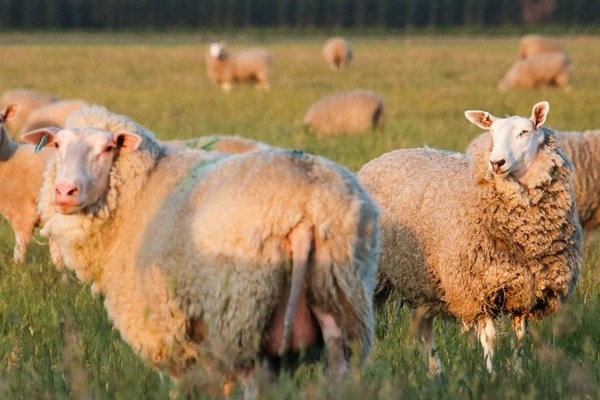
The East Friesian is a breed of dairy sheep originating from East Frisia in northern Germany. It is one of the best sheep breeds in terms of milk yield per ewe.
fries1.jpgThe origin of the Friesian sheep breeds is the region of Friesland extending along the North Sea coast westward from the Weser River in the northeast of Germany along the north coast of the Netherlands and south to the Schelde (Scheldt) River at the border of the Netherlands and Belgium. Offshore is a fringe of islands including the West “Frisian” Islands belonging to the Netherlands, the “East Frisian” Islands belonging to Germany, and, to the north, the North “Frisian” Islands divided between Germany and Denmark.
The family of Friesian sheep breeds are of the marsh-type including the East Friesian Milk Sheep (Deutsches Friesisches Milchschaf) from East Friesland, Germany, and, from the Netherlands, the Dutch Friesian Milk Sheep (Fries Melkschaap) from West Friesland, and to the south, the Zeeland Milk Sheep (Zeeuwes Melkschaap) from the Zeeland island. These breeds are similar in appearance, polled in both sexes, with white wool and white faces, ears, and legs all clean of wool. Their most distinctive physical feature is a “rat-tail”, thin and free of wool. Prints from the early 19th Century show a “short-tailed” Friesian sheep which suggests some linkage with the Northern European Short Tail breeds, the Finnish Landrace and the Romanov which is consistent with the high prolificacy of the Friesians.
- A large framed sheep, ewes 85 to 95 kgs, thin tailed, and very clean around the back end
- Pink nose, and head and legs clear of wool, pale hooves
- Lean on the outside of their carcase
- High fertility; very milky
- White wool of approximately 37 microns.
A dual purpose, high fertility breed used to increase flock fertility. A sire for creating crossbred ewes and as a terminal crossing sire. Also used for breeding milking ewes.